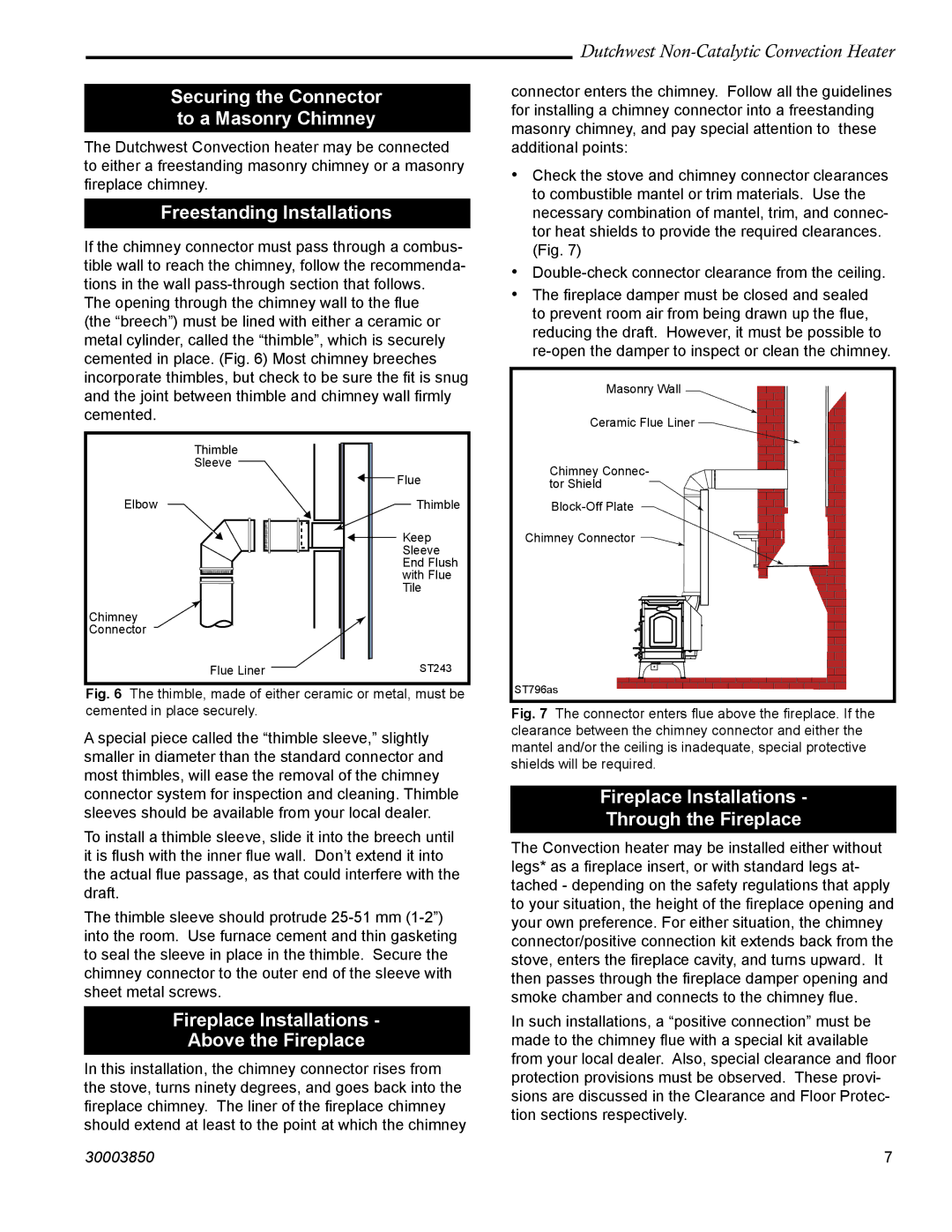2478CE specifications
Vermont Castings 2478CE is a premier wood stove that exemplifies the perfect blend of traditional craftsmanship and modern efficiency. Designed for those who appreciate both aesthetic and functional qualities in home heating, this model is a standout in the Vermont Castings lineup.One of the main features of the 2478CE is its impressive heating capacity. It can produce up to 75,000 BTUs, making it capable of warming spaces of up to 2,500 square feet. This robust output ensures that your home remains cozy even on the coldest winter nights, allowing for a warm and inviting atmosphere.
The stove is constructed from high-quality cast iron, which not only adds to its durability but also allows for superior heat retention. This means that the stove will continue to emit warmth long after the fire has burned down, providing extended comfort without the need for constant refueling.
Vermont Castings has equipped the 2478CE with advanced air management technology. The unique air wash system ensures a clean and efficient burn by directing air across the glass door. This feature keeps the viewing window clear, allowing users to enjoy the mesmerizing flames without the nuisance of soot buildup.
Moreover, the 2478CE utilizes secondary combustion technology, which helps to maximize efficiency and minimize emissions. This innovative system re-burns smoke and gases that would otherwise be released into the atmosphere, ensuring that more heat is extracted from the wood. As a result, the stove achieves an impressive efficiency rating of up to 82%.
Another notable characteristic of the Vermont Castings 2478CE is its traditional design, complete with intricate detailing and a large firebox. The firebox is designed to accommodate larger logs, allowing for longer burn times and reduced frequency of refueling. Additionally, the stove is available in various finishes to match any home decor style, from classic black to vibrant enamel colors.
For those looking to enhance their hearth experience, the 2478CE can be paired with a variety of optional accessories, such as a classic heat shield or a blower, further improving its performance and efficiency.
In conclusion, the Vermont Castings 2478CE represents an excellent choice for homeowners seeking a reliable, beautiful, and efficient wood stove. With its substantial heating capacity, advanced technologies, and timeless design, it promises to be a centerpiece of comfort in any home for years to come.

